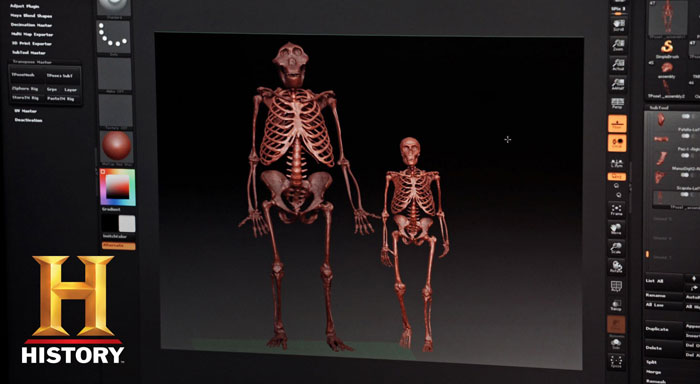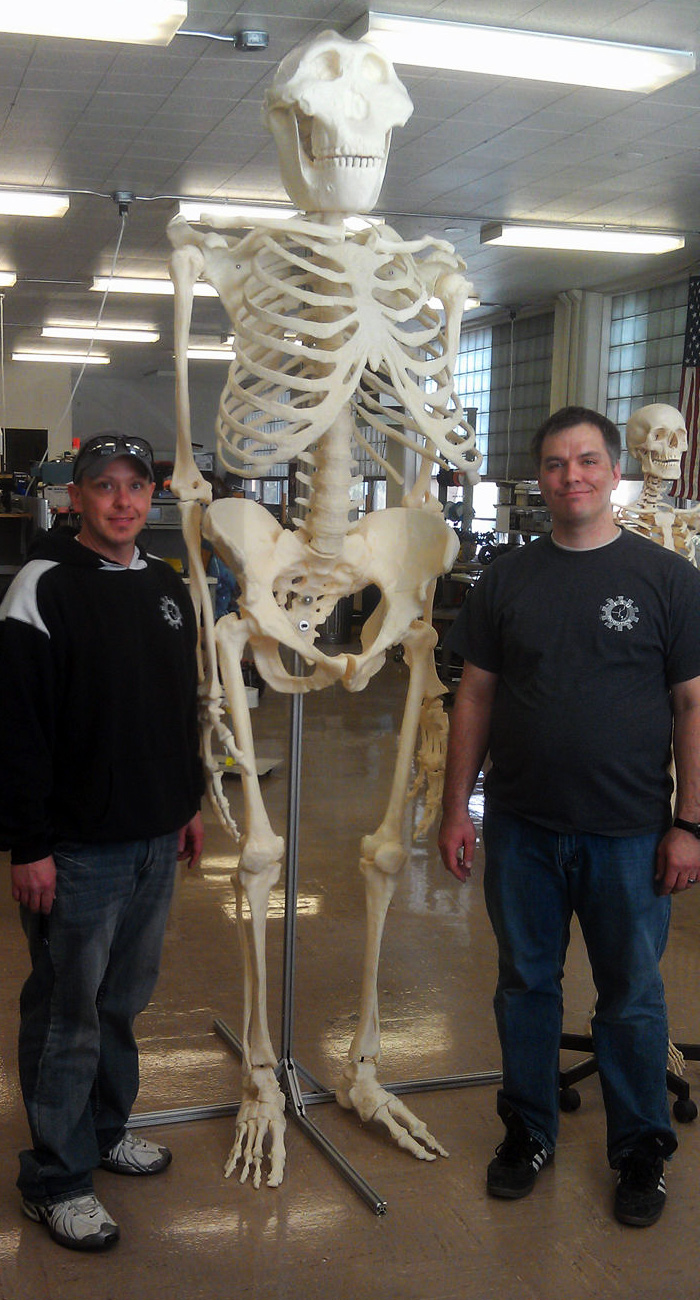
Even though Bigfoot Captured missed it’s mark with most audiences, something great came of all that History Channel funding. Did you ever think you’d see a 3D bigfoot skeleton? Truly, welcome to the 21st century, where brilliant minds work together to play with the bounds of science and technology. One of the more high-profile Bigfoot defenders and researcher, Dr. Jeffrey Meldrum worked with digital modeling teams to craft the world’s first ever presentation of an anatomically perfect 3D Bigfoot skeleton.
Without any Bigfoot bones, how did they create a skeleton?
As part of Bigfoot Captured, the History channel special about hypothetically trapping a live Sasquatch, Dr. Meldrum and Idaho State University paired with the Idaho Virtualization Laboratory and Idaho Museum of Natural History. Meldrum, a professor of anthropology and anatomy at ISU, based his final model on the infamous Patterson/Gimlin Sasquatch (commonly referred to as ‘Patty’) from 1967. He worked with other Sasquatch researchers and musculoskeletal specialists to mine supposed Bigfoot cousins and ancestors, like Gigantopithicus Blacki, the extinct genus of giant Asian apes that lived only 100,000 years ago, and Homo neanderthalis, neanderthals, for their own bone structures. They applied those bones and proportions to the final design, which ended up a staggering 8’5″. With these proportions, the creature would be well over 600 lbs.
What was the 3d printing process like?
The digital design process to construct this amazing 3D Bigfoot skeleton is fascinating in its own right. Using pieces of other great apes and hominids, Meldrum sat for hours with 3D specialists to tweak bones one at a time: realigning, resizing, twisting, and rotating. While simultaneously analyzing the famed Patterson/Gimlin footage, Meldrum and team went into great detail to achieve the perfect look. “We had to widen the shoulders and increase the thickness in the torso.” Meldrum said. “The hips are as wide as the shoulders; the body was built like a tank.”
The 3D Bigfoot skeleton took 1600 hours (66 days worth of time) to print. 1000 cubic inches of plastic were fused together for the final product. Numerous 3d printers across the state were employed for this massive project, as well as some in Washington.
Meldrum Strikes Again
Even though Dr. Meldrum disapproves of the Bigfoot Captured program, this was a fantastic project for the world of Bigfoot. It not only brought real science and evidence into the spotlight, but it first and foremost gathered academic minds together to collaborate on a subject that is heavily ridiculed. Hopefully this is a springboard for other great minds to lend their insight to the topic of Sasquatch. Much praise to Dr. Meldrum and his team.
“I’m delighted these departments were not only interested, but willing to participate in an exercise that I hope will be insightful and informative, and in pursuing this fascinating question of the potential of the existence of a relic hominoid species.” – Dr. Meldrum

